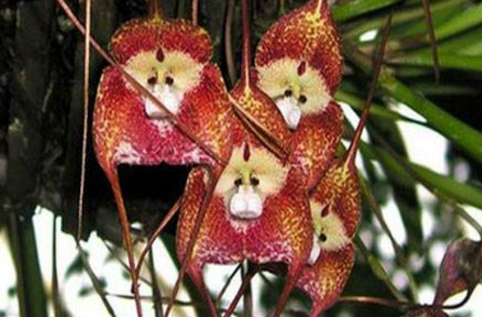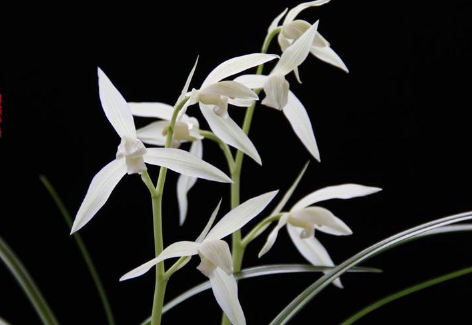Specific steps of Platycodon grandiflorum cutting
1. First insert a small hole in the basin soil with chopsticks or sticks, put the cuttings in, and then compact the basin soil with your hands and water it thoroughly.
two。 Cover with a thin film or transparent lid and put a few small holes in it for ventilation.
3. Because Platycodon grandiflorum likes to live in places with strong light, flowerpots should be placed in bright but low-temperature places.
The film or plastic lid can be removed after 10 days, and the cuttings can take root in 5 weeks. When the cuttings take root to a certain extent, the aboveground parts begin to sprout. When the new bud grows the second pair of leaves, it can be transplanted, and normal maintenance can be carried out at this time.

This is the end of the introduction to the breeding methods of Platycodon grandiflorum. Flower friends, if you have any questions, you are welcome to leave a message and consult! In addition, when cutting, we must pay attention to keep the basin soil moist but not too wet!
How to cut Platycodon grandiflorum? Cutting Propagation method of Platycodon grandiflorum
The most commonly used method for propagation of Platycodon grandiflorum is sowing method. In fact, in addition to sowing method, cutting method can also be used for propagation. However, because many flower friends do not master the correct method when cutting, the survival rate of Platycodon grandiflorum after cutting is not high. Below, we will bring you a practical method of cutting propagation of Platycodon grandiflorum, which can effectively improve the survival rate.
Picture: cutting propagation method of Platycodon grandiflorum
I. selection of materials
To choose the part of Platycodon grandiflorum with strong meristematic ability, it is best to have stronger meristematic ability of the stem under the second pair of leaves under the heart leaves after jointing, so the selection is very important for cuttings. The stem under the first pair of leaves under the heart leaf is more delicate and requires higher nutrients, so the survival rate is slightly lower. It is best to choose cuttings with only one pair of leaves, and the survival rate will increase.
Second, cuttings treatment
The cuttings are obliquely cut into small segments containing a pair of leaves. The purpose of oblique cutting is to increase the area of meristem for cutting stubble. Then cut off half of each leaf, because at the beginning of cutting, because there is no root system, the nutrients needed by cuttings are originally stored, cutting half of the leaves can reduce the consumption of nutrients, more conducive to rooting. But not all the leaves can be cut off, so that cuttings can not carry out photosynthesis, unable to produce nutrients.
III. Prepare the matrix
The substrate is slightly alkaline and the pH value is maintained at 6 Mel 6.5. You can use peat plus some vermiculite and perlite, stir in some carbendazim, and then disinfect the substrate to prevent the growth of bacteria. Water the substrate thoroughly before sowing to keep it moist.
Picture: cutting propagation method of Platycodon grandiflorum
IV. Concrete steps
1. Insert a small hole in the basin soil with chopsticks or sticks and put the cuttings into
two。 Compacted the basin soil with your hands and watered it thoroughly.
3. Cover the film or transparent lid and put a few small holes in it to breathe.
4. Put the flowerpot in a bright but low temperature place, which can accept direct sunlight in winter and early spring.
5.The film or plastic lid can be removed after 10 days, and the cuttings can take root in 5 weeks. When the cuttings take root to a certain extent, the aboveground parts begin to sprout.
6. When the new bud grows the second pair of leaves, it can be transplanted, and normal maintenance can be carried out at this time. The above is about the introduction of cutting propagation methods of Platycodon grandiflorum. Platycodon grandiflorum likes warm, moist and sunny environment, which is more drought-resistant and not water-resistant, so we need to pay special attention to it in the maintenance process.
[photo] how to cut Platycodon grandiflorum in 6 steps
Platycodon grandiflorum cutting propagation mode operation is not very difficult, then how Platycodon grandiflorum cutting, as long as the cutting materials are prepared in advance, Platycodon grandiflorum cutting is still very simple, the following arrangement of Platycodon grandiflorum cutting methods and steps.
How to cut Platycodon grandiflorum 1. Pot soil preparation
The substrate of Platycodon grandiflorum cuttings is generally slightly alkaline, and the pH value is maintained at 6. 5. You can add some vermiculite and perlite with peat, stir in some carbendazim, and then need to disinfect the substrate to prevent the growth of bacteria.
3. Branch selection
It is suggested that the part with strong meristematic ability of Platycodon grandiflorum must be selected. in addition, the meristematic ability of the stem under the second pair of leaves after jointing is stronger, which is very important for the survival rate of cutting and selecting the right cuttings.
The stem under the first pair of leaves under the heart leaf of Platycodon grandiflorum is more delicate and requires higher nutrients, so the survival rate is slightly lower.
It is generally recommended that flower lovers choose cuttings with only one pair of leaves, so that the survival rate of cuttings will be higher.
4. Branch treatment
Cut the selected branches and cuttings diagonally into a small section, and keep a pair of leaves, and then cut each leaf in half, mainly to reduce the consumption of nutrients and more conducive to the rooting of cuttings.
5. Cutting method
It is generally recommended that flower friends first insert a small hole in the prepared basin soil with chopsticks or sticks, then put the cuttings in, and finally compact the basin soil with their hands and water it thoroughly.
Then wrap a thin film or transparent lid on the basin lid, and be sure to put a few small holes in it for ventilation. Then move the flowerpot to a ventilated environment with a certain degree of astigmatism.
6. Rooting and planting
Generally speaking, the cuttings can take root in 5 weeks, but it is recommended that flower friends take off the film or plastic lid 10 days after cutting. when Platycodon grandiflorum takes root to a certain extent, the aboveground parts begin to sprout.
In general, when the new buds of Platycodon grandiflorum grow the second pair of leaves, flower friends can be transplanted.
- Prev

The Propagation method of Monkey-faced Cymbidium
Sowing and breeding monkey face small dragon orchid can self-pollinate, but the seeds are easy to scatter, so they should be collected in time. Monkey face small dragon orchid seeds, can be used to raise seedlings on a flat plate, do not need to cover the soil, to have sufficient sunshine, generally a month to seedling. The seedlings do not need to be watered frequently, just keep the substrate moist.
- Next

The culture method of big snow element
1. The light big snow element does not have the high request to the light, it prefers the shade, is suitable to grow in the shady place, the leaf grows more softly. two。 The suitable growth temperature of Daxue is 15-28 ℃, and it should not be more than 30 ℃ in summer. Shading and cooling treatment should be done in time, and the air temperature in winter should be kept above 0 ℃.
Related
- Fuxing push coffee new agricultural production and marketing class: lack of small-scale processing plants
- Jujube rice field leisure farm deep ploughing Yilan for five years to create a space for organic food and play
- Nongyu Farm-A trial of organic papaya for brave women with advanced technology
- Four points for attention in the prevention and control of diseases and insect pests of edible fungi
- How to add nutrient solution to Edible Fungi
- Is there any good way to control edible fungus mites?
- Open Inoculation Technology of Edible Fungi
- Is there any clever way to use fertilizer for edible fungus in winter?
- What agents are used to kill the pathogens of edible fungi in the mushroom shed?
- Rapid drying of Edible Fungi

